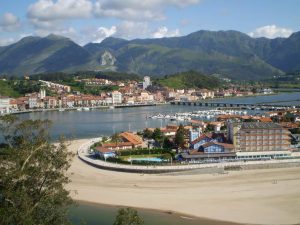In the search for enriching and environmentally friendly travel experiences, more and more people are opting for the sustainable tourism. This conscious approach not only allows you to explore popular destinations responsibly, but also contributes to the preservation of its natural and cultural beauty.
How can we enjoy iconic places without compromising their integrity? What are the key practices to ensure our footprint is positive at every step? In this post we offer you valuable tips to apply the philosophy of sustainable tourism when visiting popular destinations. Join us on this journey towards more conscious tourism and discover how to have a sustainable experience.
Índice de contenidos
Responsible planning
Planning before resorting to a agency to do the Camino de Santiago de Compostela It is essential to ensure that your trip is not only memorable, but also respectful of the environment and the local community. Before you begin your pilgrimage, take time to research travel options. accommodation, restaurants and services that follow sustainable practices.
Opt for places that are committed to environmental conservation and promote local culture. Incorporates the waste reduction in your planning. For example, try to bring reusable utensils and avoid single-use products. Also, find out about options recycling and waste management in the destinations you will visit.
Lightweight and sustainable backpack
If you do the French way trip from Sarria to Santiago de Compostela, carry the essentials.
When preparing your luggage, prioritize items that are essential and versatile. Choose comfortable and functional clothing that adapt to various climatic conditions. By doing so, you will not only be lightening your physical load, but also reducing the need to consume additional resources.
An essential part of sustainable packaging involves the choice of containers and products. Use reusable water bottles instead of disposable plastic bottles and carry with you reusable utensils to avoid generating unnecessary waste.

The choice of cloth bags instead of plastic bags is also an effective way to contribute to sustainability during your trip. These are not only practical for transporting your belongings, but they also help reduce the amount of single-use plastic.
Use eco-friendly transportation
When you plan your trip to the starting point of your pilgrimage, whether you choose the French Route or the Northern Route of the Camino de Santiago, consider using options public or shared transportation instead of private vehicles. This not only reduces carbon emissions, but also helps reduce traffic congestion and minimizes the environmental impact on surrounding areas.
Once you’re on the trail, prioritize travel methods more geared toward sustainable tourism, such as the bicycle or simply the walk. These options allow you to connect more intimately with the natural environment of the Camino. In addition, they reduce the need for motorized transportation, thereby reducing your carbon footprint.
Choosing eco-friendly transportation not only benefits the environment, but can also add a meaningful component to your experience on the Camino de Santiago. By walking or cycling, you have the opportunity to appreciate the landscapes more closely, interact with the local community and enjoy a slower and more conscious pace.
Enjoy nature responsibly
When walking the trails be sure to follow the designated routes and respect the signs. This measure, as a basic pillar of sustainable tourism, not only protects the local flora and fauna, but also helps prevent erosion and deterioration of the trails, thus preserving the integrity of the Camino.
As well avoid disturbing wildlife. Observe animals from a safe distance and do not interfere with their habitat. Stay calm and reduce noise to minimize your impact on the environment and allow nature to take its course peacefully. In the Portuguese Way, with its lush forests in the southern region of Galicia, you will find a native fauna that will surprise you.

Pick up any waste that you generate during your journey. To do this, carry a garbage bag with you and make sure you leave the places you visit in the same condition in which you found them. This simple act contributes significantly to maintaining the cleanliness and purity of the environment.
Encourages a conscious appreciation of nature among your travel companions, especially if you are with family. Educates about the importance of respecting the environment and the need to preserve biodiversity. Involving everyone in shared responsibility promotes a more enriching and sustainable experience.
Respect local culture
By visiting towns and cities along the Camino, familiarize yourself with cultural traditions and norms region of. This prior knowledge will help you adapt your behavior respectfully and more deeply appreciate the cultural richness you encounter along the way.
You can also actively participate in local cultural events. Attending festivals, markets or community activities will allow you to immerse yourself in the authenticity of the local culture and create meaningful connections with the people who live along the area. Camino de Santiago from Tui, to mention just one example..
Support local businesses and buy artisan products. By doing so, you directly contribute to the local economy and promote the preservation of business traditions that are an integral part of the region’s culture. The good conduct of sustainable tourism always occurs in small daily steps.









